Scientists
Scientists are joining the Signals of Spring team interacting with Student Expert Teams. Over a dozen earth and species scientists will do their best to help with our investigations.
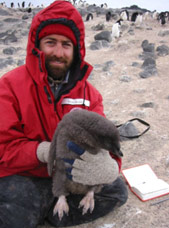
Mr. Josh Adams
Organization: USGS/Moss Landing Marine Laboratories
Josh Adams is a seabird ecologist with the U.S. Geological Survey's Western Ecological Research Center. Josh is interested in many aspects of seabird ecology and his current projects are focused on species that inhabit the California Current System (Sooty Shearwater, Cassin's Auklet, Ashy Storm-petrel, and Black-footed Albatross). He is motivated to understand how patterns in the ocean environment influence aspects of seabird ecology, including at sea distribution and abundance of seabirds, movements and foraging behaviors of adults during the breeding season, and the interaction of key seabird prey (krill, larval fishes, sardines) with oceanographic features (eddies, upwelling fronts). Josh currently is using satellite remote sensing of the ocean surface, coupled with wildlife telemetry, to help describe important seabird habitats off southern California, and throughout the Pacific.
Josh received a B.A. in Biology from the University of California, Santa Cruz, recently earned a M.Sc. in Marine Science from Moss Landing Marine Laboratories, California and has plans to complete a Ph.D. in Zoology through the University of Otago in New Zealand. He has conducted work with seabirds and marine mammals in many different environments, including California, Hawaii, Alaska, and Antarctica.

Dr. Suzanna Barth
Organization: National Polar-orbiting Operational Environmental Satellite System (NPOESS), Raytheon Company
Dr. Suzanna Barth is the Algorithm Lead for the NPOESS ground stations, collecting data from 14 satellite instruments (visible, infrared, ultraviolet, and radar) in order to calculate over 56 atmospheric, land, and ocean measurements for use in operational weather forecasting and climate research. Her doctoral research involved measuring ocean heat, as well as heat exchange between the ocean and the atmosphere, especially during hurricanes. Before returning to school, she worked for NASA for five years, flying all over the world in an airborne laboratory supporting atmospheric scientists.
Dr. Barth was a high school exchange student in Germany and holds two bachelor's degrees in German and Mathematical Economics from Ohio State University. She also has master's degrees in both Economics and Aerospace Engineering. Her Ph.D. was earned in Aerospace Engineering Science, while working as a Research Assistant at the University of Colorado, specializing in remote sensing of atmospheres and oceans.
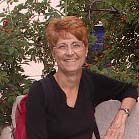
Ms. Terry Gillespie
Organization: Village of Flossmoor, IL
Terry Gillespie is a licensed Pesticide Applicator/Operator with the State of Illinois, a butterfly monitor, and certified secondary science teacher. She is currently employed by the Chicago Botanical Garden and the Field Museum of Natural History to use Garden and Museum resources to engage young students in nature study. Before retirement Terry taught high school and community college science and math.
Terry holds a B.A. in Biology from Park College and an M.A. in Botany from the University of Texas. She did her master's thesis on flowering plants at the Institute of Marine Science on Mustang Island, TX, where she also acquired an interest in plankton. She did postgraduate work on alpine flora at the University of Montana, received a NSF fellowship to Colorado State University, and did additional graduate work at the University of Illinois, specializing in urban weeds. Her current jobs keep her outdoors and in touch with nature year-round, burning prairie, fighting teasel, buckthorn, and garlic mustard to restore species diversity to several retention basins and turning a former parking lot into a demonstration prairie.
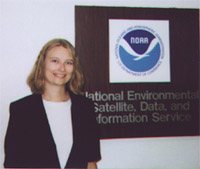
Ms. Ingrid Guch
Organization: National Environmental Satellite, Data and Information Service (NESDIS)
Ingrid Guch is a physical scientist at the National Environmental Satellite, Data and Information Service (NESDIS) of the National Oceanic and Atmospheric Administration. She specializes in using real-time satellite data to study the ocean and the atmosphere. Currently, she is working on projects to monitor global vegetation using visible channel data. Ingrid also uses microwave channel data from NOAA Polar-orbiting Operational Environmental Satellites (POES) to study weather variables such as atmospheric moisture, rain rates, sea ice and snow cover.
Ingrid received her Bachelor of Science Degree in Mathematical Sciences at the University of California, Santa Barbara and her Master of Science Degree in Atmospheric Science at Colorado State University.
Dr. Laura Guertin
Organization: Penn State University - Delaware County
Dr. Laura Guertin is an Associate Professor of Earth Science at Penn State University-Delaware County. She teaches courses in physical geology, historical geology, oceanography, and coastal disasters and hazards. Currently she is working with students on projects that examine the changes in Earth's biodiversity through geologic time, and the changes that occur on beaches in the coastal environment through space and time.
Dr. Guertin received a bachelor's degree in Geology at Bucknell University. She continued to complete a Ph.D. in marine geology and geophysics at the University of Miami's Rosenstiel School of Marine and Atmospheric Science.
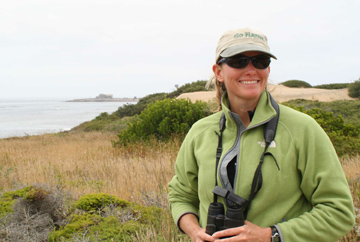
Ms. Michelle Hester
Organization: Oikonos Ecosystem Knowledge
Michelle Hester is a researcher and co-founder of Oikonos Ecosystem Knowledge, a non-profit organization. Currently she is President of Oikonos and encourages her colleagues to be successful in their projects while doing her own research as well. Her research focuses on investigating relationships between animals and their environment, especially on islands. Recent projects include using satellite telemetry to understand in a better fashion Black-footed Albatross movements across the Pacific. She has worked in the field studying seabird biology, foraging, and habitats in Antarctica, South Africa, California, the Caribbean and now resides in Hawaii. Michelle attended graduate school at Moss Landing Marine Laboratories and undergraduate at University of California, Santa Cruz.
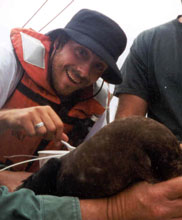
Dr. David Hyrenbach
Organization: Hawaii Pacific University and Duke University
Dr. David Hyrenbach is an oceanographer interested in the oceanic habitats of far-ranging pelagic vertebrates (seabirds, turtles, cetaceans, tunas), and the physical mechanisms (upwelling, convergence) that define predictable areas of enhanced biological activity in pelagic systems. His objective is to incorporate an understanding of natural history and oceanography into the design of management and conservation strategies (i.e., area closures, Marine Protected Areas) to protect highly mobile pelagic species and their dynamic habitats. This integrated and interdisciplinary approach is essential to address complex conservation problems like fisheries by catch.
Dr. Hyrenbach earned a B.S. in ecology and a Ph.D. in oceanography from the University of California at San Diego. He currently teaches at Hawaii Pacific University and is an adjunct professor at the Duke University Marine Laboratory. He is involved in research projects in the North Pacific, the Mediterranean Sea, and the Southern Indian Ocean.
Dr. Amanda Jaksha
Organization: New York Hall of Science
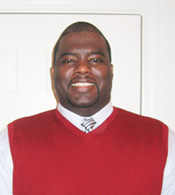
Mr. Kwesi Joseph
Organization: U.S. Satellite Laboratory
Kwesi Joseph graduated from the City University of New York, York College with a Bachelor of Science in Geology. He specializes in Structural Geology and Field Mapping which allows him to be outside the office and enjoy the outdoors. Structural Geology involves going out into the field and interpreting the geological features on the surface of the earth to determine the subsurface features and what geologic forces (such as faults caused by earthquakes and the deformation of rocks due to compression or tension) formed those structures.
On one particular field mapping trip, Kwesi was exposed to the dangers of working in the wilderness. "We were mapping in an area that was mined for cement, the same cement that was used to build the Brooklyn Bridge," Kwesi said, "we had to be really careful where we walked because we could have stepped into an old ventilation shaft and fallen into a mine." But that wasn't the worst part of this particular trip as Kwesi explained, "going into the mines was very dangerous because the ceilings collapsed regularly, we were about 600 feet from a ceiling collapse while we were working. Fortunately, we were above ground at the time." He also said the weirdest thing about the mines was the temperature, and that the mines are a consistent cool temperature year round due to the presence of water. In the summer time, swarms of mosquitoes gathered at the opening of the mines. "I actually walked through a cloud of mosquitoes and they were all trying to bite me; luckily I was covered in repellant, but I still had to worry about Copperhead snakes and poison ivy while collecting data, Kwesi said. "That is why I like working outdoors, you get to see and experience things that most people don't."
Kwesi is a former high school Earth Science teacher for the Department of Education of New York and works with U.S. Satellite Laboratory as a curriculum developer.
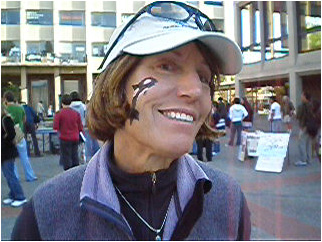
Ms. Carol Keiper
Organization: Oikonos Ecosystem Knowledge
Carol Keiper is a marine ecologist and one of the founding board members of Oikonos Ecosystem Knowledge (www.oikonos.org), a non-profit research, conservation, and education organization. For more than 20 years, Carol has been involved in at-sea research, specializing as a seabird and marine mammal observer. She has a strong interest in the ecology of the California Current System. She is actively involved in linking current research on the Black-footed Albatross with conservation actions that address impacts of plastic marine debris. Carol has also been leading natural history trips to Cordell Bank, Gulf of the Farallones, and to the Monterey Bay National Marine Sanctuary for the past 20 years. During the period of 2004-2005 she has served on the Cordell Bank National Marine Sanctuary Advisory Council as the Chair and as the Research seat from 2001-2007.
Carol received her M.Sc. in Marine Science, Moss Landing Marine Laboratories, CSU San Jose, 2001 and her B.A. in Education at Keane University, Union, New Jersey, 1965.
In 2005, Carol was honored with the NOAA Environmental Hero Award as well as the Outstanding Volunteer Award, on behalf of the U. S. National Marine Sanctuaries.
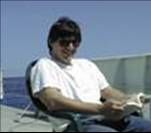
Dr. Daniel King
Organization: Drexel University, Chemistry Department
Dr. Daniel King is an Assistant Professor of Chemical Education in the Department of Chemistry at Drexel University. He teaches general chemistry, physical chemistry, environmental chemistry, and a course on everyday chemistry. His current research interests include testing the effectiveness of active teaching techniques and developing interactive laboratory experiments. During his post-doctoral research at the NOAA Climate Monitoring and Diagnostics Laboratory (in Boulder, CO), he measured the air and seawater concentrations of halocarbons on several open ocean research cruises. These chemicals are both naturally produced and man-made, and contribute to the formation of the ozone hole.
Dr. King received a B.A. from The Johns Hopkins University and a Ph.D. in Marine and Atmospheric Chemistry from the University of Miami's Rosenstiel School of Marine and Atmospheric Science.
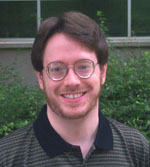
Dr. John Knox
Organization: University of Georgia
Dr. John Knox is an Associate Research Scientist in the Faculty of Engineering and Lecturer in the Departments of Biological and Agricultural Engineering and Geography at the University of Georgia (UGA) in Athens, Georgia. At UGA he has taught introductory physical geography, introductory weather and climate, weather analysis and forecasting, geophysical fluid dynamics, aviation meteorology, and computational methods. He has also taught meteorology at Valparaiso University and Barnard College of Columbia University. His research in atmospheric dynamics uses remote sensing and focuses on Rossby waves, nonlinear balance, clear-air turbulence, and cyclone-induced windstorms.
John showed an interest in being a meteorologist at the age of five. He followed that dream and received his B.S. in mathematics from the University of Alabama at Birmingham and his Ph.D. in atmospheric sciences from the University of Wisconsin, Madison. He was a post-doctoral fellow in climate systems at Columbia University in conjunction with the NASA/Goddard Institute for Space Studies (NASA/GISS) in New York City, where he worked extensively with NASA/GISS on its Climate and Planets program. He is also a longtime member of the International Crane Foundation.
John's wife Pam is the Assistant State Climatologist of Georgia and is a past president of the American Association of State Climatologists. John and Pam are frequent viewers of The Weather Channel, while son, Evan, plays with his trains.
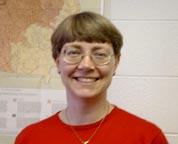
Ms. Pam Knox
Organization: University of Georgia
Pam Knox is the Assistant State Climatologist and Program Coordinator for the State Climatology Office in the Department of Biological and Agricultural Engineering at the University of Georgia (UGA). In her work she provides weather and climate data to a wide variety of users across the nation, including engineers and scientists, lawyers, students and teachers, reporters, government workers and private citizens. She also maintains the web pages for the State Climatology Office and does research on topics relating Georgia's climate to agriculture, health, and economy.
In previous positions, Pam has served as the Wisconsin State Climatologist, a meteorologist for the National Weather Service in Maryland and Texas, and an instructor of physics, meteorology and astronomy at Calvin College in Grand Rapids, MI. She has also served as the President of the American Association of State Climatologists. Her educational background includes majors in physics and mathematics from Calvin College and a master's degree in satellite meteorology from the University of Wisconsin.
Pam first got interested in the weather when she was in the third grade. A small tornado passed just two blocks from her house and knocked out the power for a weekend, displaying tremendous strength in a small area and almost destroying her grandfather's new car. She continues her interest in all weather-related matters by watching The Weather Channel and working as a Certified Consulting Meteorologist doing legal analysis and testimony as it relates to weather. She is also interested in bird watching and is a longtime member of the International Crane Foundation.
Pam's husband John is an Associate Research Scientist and Lecturer at the University of Georgia, and a past advisor to Signals of Spring. He is also a co-author of Meteorology: Understanding the Atmosphere, a college textbook published by Brooks/Cole. John and Pam have a son, Evan, who is tired of watching The Weather Channel, but loves Yu-Gi-Oh and model trains.
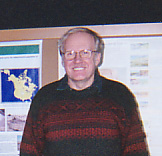
Dr. Gary Krapu
Organization: U.S. Geological Survey at the Northern Prairie Wildlife Research Center
Dr. Gary Krapu is an ornithologist who has worked for the U.S. Geological Survey at the Northern Prairie Wildlife Research Center (one of our Signals of Spring Partners) in North Dakota for 31 years. He uses satellite data to track the migration routes of sandhill cranes banded at the Platte River, and has conducted studies on cranes from Alaska to Texas. Dr. Krapu and his team are studying breeding, habitats, and genetic relationships within and between subpopulations of cranes.
Dr. Krapu dreamed of becoming an ornithologist as a young boy. He stayed on this course through grade school, high school, and college. In 1972, he got his doctorate in animal ecology from Iowa State University.
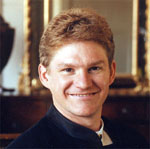
Dr. Raphael Kudela
Organization: USC at Santa Cruz, Department of Ocean Sciences
Dr. Raphael Kudela is a biological oceanographer who studies the processes which control phytoplankton growth in the oceans. He is especially interested in how the availability of light and nutrients interact within the phytoplankton cells, and how this relates to the marine environment. His research combines shipboard and moored platform measurements with satellites (especially ocean color sensors) and models. He is currently working on several projects related to harmful algal blooms, and is collaborating on projects to relate the abundance of whales to the presence of phytoplankton blooms.
Dr. Kudela received his B.S. from Drake University (Iowa), and his Ph.D. from the University of Southern California. He has also worked at the Jet Propulsion Laboratory, the Monterey Bay Aquarium Research Institute, and the Los Alamos National Laboratory.
Dr. Keira Lam
Organization:
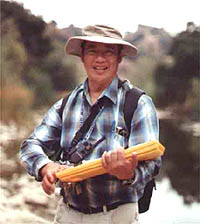
Mr. Gregory Lee
Organization: Earth Systems Science, Inc. / Pasadena City College
Gregory Lee is CEO and a co-founder of Earth Systems Science, Inc. (ESSI), a California educational non-profit corporation. ESSI provides community-based environmental education for urban families and sustainable neighborhoods. Gregory is also a full Professor of Geography at Pasadena City College where he has taught Physical Geography, Geography Lab, and Field Methods for the past 14 years. He earned a B.A. in Geography (with a minor in Anthropology and Archaeology) from the University of Arizona (1969), an M.A. in Geography (with a minor in Geology) from the University of North Dakota (1971), and did post graduate research in applied remote sensing of the environment at Rutgers, the State University of New Jersey. Gregory gained 12 years experience as an applied Earth Scientist working in various geo-technical and environmental consulting engineering firms before returning to teaching.
ESSI's community-based education approach is a non-traditional, outdoor, interactive, hands-on method integrating academic geography with job readiness preparation. Much of the work of ESSI is directed to empowering common people of all ages to become engaged in learning and promoting sustainable practices in their personal lives and local neighborhoods. Gregory recently adapted the ESSI curriculum to collaborate with the National Wildlife Federation to train Habitat Stewards in the greater Los Angeles area. Plans are also underway to introduce a no-till / living mulch agricultural technique in Nan Province (Thailand) as a community-based youth environmental education program.
Dr. Meghan Marrero
Organization: Mercy College
Meghan Conk is a Project Coordinator for Signals of Spring and an Educator/Scientist. Most recently, she has conducted climate research, testing General Circulation (computer) Models to see how well they simulate atmospheric and oceanic features such as currents, sea surface temperature, and precipitation.
In the past, Meghan has been a part of rehabilitation and research teams working with stranded sea turtles and marine mammals. The team nursed the animals back to health, and released them with transmitters to track their movements.
Meghan holds a bachelor's degree in Biology, with a concentration in Marine Biology, from Cornell University, and a master's degree in Secondary Science Education from Teachers College, Columbia University.
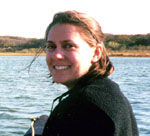
Ms. Kathy Mills
Organization: Cornell University, Department of Natural Resources
Kathy Mills is a marine and estuarine ecologist studying patterns of fish interactions with various habitats. Her most recent work has utilized fish communities as indicators of environmental quality in tidal wetlands. She has also investigated fish use of submerged aquatic vegetation habitats and the recovery of populations of the endangered shortnose sturgeon in the Hudson River. For the past year, she worked in the U.S. Senate, where she applied her scientific expertise to development of policies for fisheries management, marine habitat protection, and climate change mitigation. In this role, she also monitored and sought solutions to minimize interactions of commercial fisheries with right whales and sea turtles, two species that will be the subject of Signals of Spring investigations.
Kathy holds a bachelor's degree from Duke University in Environmental Science and Policy as well as Political Science. She is currently pursuing her M.S. in Natural Resources at Cornell University.

Dr. Charles Mott
Organization: Natural Science Department, Santa Fe Community College
Dr. Charles Mott is an instructor of geology and a retired professional geologist licensed in Florida. He has taught at the college and university level for 40 years. He has been active in curriculum design for geology and earth science courses, and has been involved in the development of instructional delivery systems and online course development for individualized programs.
Dr. Mott received a B.S. Ed. from the State University of New York at Geneseo in 1963, an M.S. in Geology from the University of Florida in 1967 and Ed. D. in Community College Curriculum and Instruction from Nova University in Ft. Lauderdale, FL in 1975.
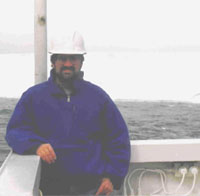
Dr. Joseph Ortiz
Organization: Kent State University, Department of Geology
Dr. Joseph Ortiz is an Assistant Professor in the Department of Geology at Kent State University. He studies climate change and paleoceanography using a variety of research methods, including sediment physical properties, geostatistics, marine micropaleontology, and stable isotope geochemistry. Dr. Ortiz has participated in deep sea research cruises from the Pacific to the North and South Atlantic Oceans. At Kent State, he teaches courses in Oceanography, Sedimentology and Stratigraphy, and Light Isotope Geology. Dr. Ortiz was a member of the research staff at the Lamont-Doherty Earth Observatory of Columbia University from 1996-2001.
Dr. Ortiz received his Ph.D. in Oceanography from Oregon State University in 1995. In 1988, he earned a B.S. in Aquatic Biology with Honors from Brown University in Rhode Island.
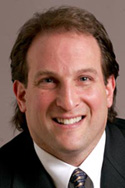
Mr. Glen Schuster
Organization: U.S. Satellite Laboratory
Glen Schuster is a scientist-educator and the Principal Investigator and Director of U.S. Satellite Laboratory's federally-sponsored, award-winning projects, which include Signals of Spring, Project 3D-VIEW, SPRINTT, WDLC and the Endeavor Science Teaching Certificate Project. He is a former on-air (6:00 p.m. and 11:00 p.m.) Chief Meteorologist for an ABC-TV affiliate in New York State. In 1991, Glen founded U.S. Satellite Laboratory, Inc., now of Rye, New York. In 1993, he was the onsite meteorologist for the George Washington University Solar Car Team in the World Solar Challenge through the Australian Outback. When not working he enjoys coaching Little League and serving on the local school board. Married to Julie, they have two sons, Seth (10) and Justin (5).
Ms. Michelle Silk
Organization: U.S. Satellite Laboratory
Michelle Silk, Curriculum Writer, has taught geology, geography, paleontology, oceanography, climatology, and environmental science for more than 10 years at community colleges in California and New York. Her background has now expanded to include a degree in Library Science with an emphasis in Science Librarianship and Science Education. She has also interned with the Internet Public Library through Drexel University as an online reference librarian for middle, high school and college students. Michelle is using these experiences to enhance her background research and curriculum development for classroom delivery. Her strength lies in her ability to mesh her understanding of past and present atmospheric, oceanic, hydrologic and geologic phenomena, especially those associated with plate tectonics, ocean basin formation, prevailing climatic conditions and their influence on marine biology. Michelle has taught students from ages 10 to 90 in her community college experience and is an expert in adapting complex science concepts for school materials appropriate for various ages and audiences.
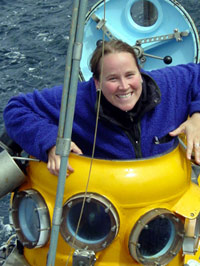
Ms. Jennifer Stock
Organization: Cordell Bank National Marine Sanctuary
Jennifer Stock is the Education and Outreach Coordinator for NOAA's Cordell Bank National Marine Sanctuary. She brings marine science into classrooms in the United States, and works with several marine scientists on different marine research projects and diligently strives to communicate its importance to all.
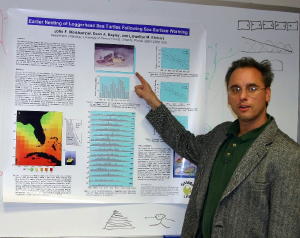
Dr. John Weishampel
Organization: Department of Biology, University of Central Florida
Dr. John Weishampel is the Director of the Geospatial Analysis and Modeling of Ecological Systems (GAMES) Laboratory that integrates geographic information system (GIS) and remote sensing technology with ecological modeling to simulate spatially explicit dynamic patterns and processes at scales ranging from individual organisms to landscapes. Dr. Weishampel's research explores how the interplay between abiotic conditions (e.g., habitat structure, natural and anthropogenic disturbance regimes) and biotic processes (e.g., competition, dispersal, growth, succession) governs the behavior of plants and animals at landscape scales. The ultimate goal of this research is to understand compositional, structural, and functional biodiversity in terrestrial and aquatic systems in a better manner.
Dr. Weishampel holds Ph.D. and M.S. degrees in Environmental Sciences from the University of Virginia and a B.S. in Biology from Duke University.
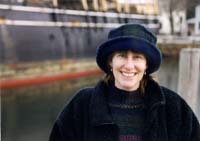
Dr. Donna Witter
Organization: Kent State University, Department of Geology
Dr. Donna Witter is a Senior Research Fellow in the Department of Geology at Kent State University in Kent, Ohio. She has worked in the field of physical oceanography for 15 years, specializing in the use of information from Earth-orbiting for measuring changes in ocean circulation. Her area of interest is the southern hemisphere oceans, where satellites provide more complete coverage than ships at sea. She has used satellite observations of sea level, winds and sea surface temperature to learn about exchanges of water between the South Atlantic and South Indian Oceans. She has also combined satellite data with computer-based ocean simulations to learn about the physical oceanography of the Southern Ocean, which flows around the Antarctic Continent.
Dr. Witter earned a B.S. in Physics and a B.A. in Geography from the University of California at Santa Barbara, and a Ph.D. in Oceanography from Oregon State University. In addition to pursuing her research, Dr. Witter teaches undergraduate oceanography classes at Kent State University.
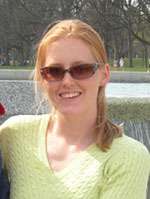
Ms. Karen Woodruff
Organization: US Satellite Laboratory
Karen Woodruff is a curriculum writer for U.S. Satellite Laboratory. Karen has taught high school biology and environmental science, worked as a naturalist and river guide, and conducted research at the Academy of Natural Sciences in Philadelphia. Her interest in bird studies led to a publication concerning the impacts of communication towers on fatality rates of migratory songbirds, in collaboration with the American Bird Conservancy.
Karen has a master's degree in Secondary Education from Lehigh University and a bachelor's degree in Environmental Science from Muhlenberg College.
Mrs. Raya-Jean Zaczyk
Organization: NASA Endeavor
|
